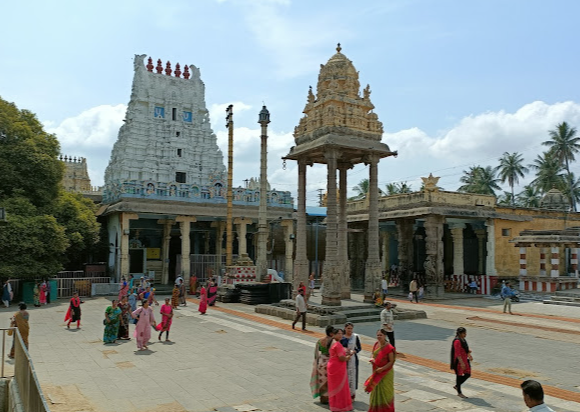ORIGIN/HISTORY:
The Sri Sundara Varadaraja Perumal Temple in Kanchipuram, Tamil Nadu, India, has a rich and long history dating back to the Pallava dynasty in the 8th century CE.
The temple is dedicated to the Hindu god Vishnu and is one of the Divya Desams, the 108 sacred temples of Vishnu revered by the Alvars, the poet-saints of Tamil Nadu.
Pallava Origins (8th Century CE)
The temple was initially constructed during the reign of Pallava king Nandivarman II (715-770 CE).
The Pallavas were renowned for their architectural prowess, and the Sundara Varadaraja Perumal Temple is a fine example of their Dravidian style of architecture.
The temple's original structure consisted of a central shrine housing the deity Sundara Varadaraja Perumal, flanked by smaller shrines dedicated to other deities.
Chola Contributions (10th-13th Centuries CE)
The Cholas, who succeeded the Pallavas in the region, made significant contributions to the temple's expansion and embellishment.
During the reign of Chola king Kulottunga I (1070-1118 CE), the temple complex was enlarged, and several new shrines were added.
The Cholas also constructed the towering gopurams (gateway towers) that adorn the temple's entrance.
Later Additions and Renovations (14th-18th Centuries CE)
The temple continued to receive patronage from subsequent dynasties, including the Pandyas, Vijayanagar Rayas, and Nayaks.
Each dynasty added their own architectural touches and sculptures to the temple, further enriching its artistic and historical significance.
Mughal Invasion and Protection (17th Century CE)
In 1688 CE, as the threat of a Mughal invasion loomed, the main idol of Sundara Varadaraja Perumal was temporarily moved to a safer location in Udayarpalayam for protection.
The idol was later brought back to Kanchipuram after the danger had subsided.
Modern Times (19th-21st Centuries CE)
The Sri Sundara Varadaraja Perumal Temple continues to be an important pilgrimage site for Hindus and a popular tourist destination.
The temple is well-maintained and regularly hosts various religious festivals and cultural events.
